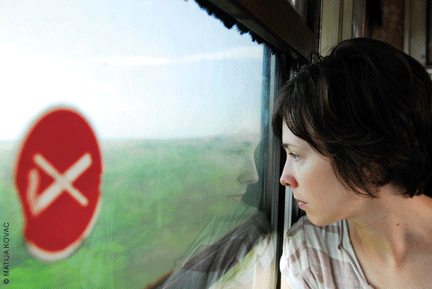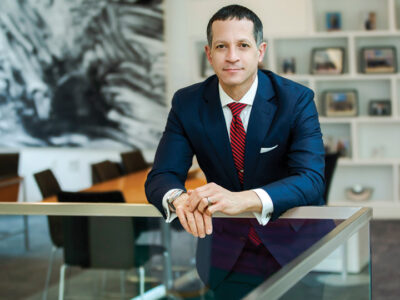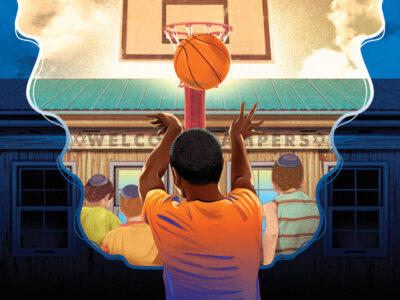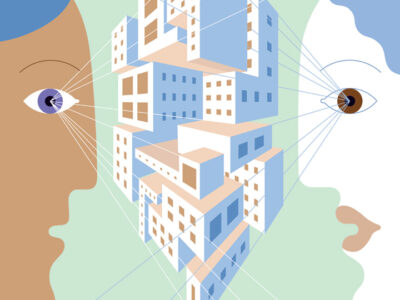
“Refugees arrive at our offices early. Often a line starts forming by 5:30 a.m.”
By Livia Rurarz–Huygens | The city lights first appear on the horizon like fireflies emerging on a summer night. They converge on one point, then grow into an endless, sprawling swarm relentlessly rushing toward the plane. We land in Nairobi, Kenya. I’ve come seeking a fresh start after a year in Beirut with the United Nations High Commissioner for Refugees, resettling Iraqi refugees seeking asylum from violence or persecution.
I’ve also come because Kenya is home—if you can call it that—to an even more bewildering array of asylum seekers and refugees. The country’s unfortunate geographical position has turned it into a crossroads for those in flight. To the north, three decades of civil war in Southern Sudan have pushed thousands of Nuer and Dinka into northern Kenya. Ethiopians have joined this flow, fleeing a government that clamps down on political opponents, human rights activists, journalists, and minorities like the Oromo. And across a third border lies Somalia, the prototypical failed state, whose power vacuum has been filled, at least in the south of the country, by the violent Islamic organization al-Shabaab.
The subsequent hemorrhage of people has resulted in 412,000 registered refugees in Kenya, not to mention those who live without proper documentation confirming their status. For a country of 38.6 million people, this is a significant number. For me, it meant opportunities to find work with the plethora of organizations that work with refugees here, and it’s not long before I’m taken on again with the UNHCR in their urban resettlement program in Nairobi. We relocate refugees who cannot return home or remain in a country of asylum to a third country, like the United States, Canada, or Australia.
My own city hopping is not driven by a search for security or safety, but I do know something about the pain and despair of being uprooted from your home. My mother’s family came to the US as refugees from Poland in 1981. The sense of loss that comes from being orphaned from one’s home and culture is hard to describe, but even as a child born in my mother’s adoptive homeland, I could feel their disorientation and knew that it would never fully disappear. No refugee can really know what awaits them in a land so different from their own.
In Kenya, where many refugees hope most fervently to be resettled in North America, the gulf between expectations and reality is widened further by stereotypical notions that run in two directions. Refugees often have a romantic image of what they will find when they arrive in the US—a house, jobs aplenty, and an ease of living that has, as yet, eluded them. But Americans often have equally warped images of the places these asylum-seekers are coming from—a misunderstanding that can make it even harder for new arrivals to adjust, or even to be granted asylum in the US at all. News media have spread images of African misery, poverty, and violence, yet in places like Nairobi, economic growth, construction booms, and a high standard of living are not only possible but common. Eastleigh, the Somali neighborhood in Nairobi, for example, is full of shops and businesses where refugees and Kenyans alike flock to buy everything from shoes to cell phones to cheap satellite-television access.
Notions of the starving refugee languishing in a camp are largely outdated. Though camps still exist, a growing number of refugees are—like the rest of the world’s population—moving into cities. After all, refugees are people, and people seek opportunities where they can most readily find them. Nairobi is full of refugees who brave poverty, homelessness, arrest, and discrimination to create a present and a future for themselves and their families.
Refugees arrive at our offices early. Often a line starts forming by 5:30 a.m. There are Sudanese men with the parallel scars of manhood etched on their foreheads, Ethiopian women draped in white scarves, and Somalis floating by in their red and black hijabs trailing the scent of eucalyptus in their wake. They tote their food for the day in plastic containers and thermoses, knowing the wait may be long. I dive into this colorful melee to sort out who goes where and tax my poor Swahili to ask what department they need.
“Unaenda wapi?” Where are you going? Women with young children, the elderly, and those with disabilities are served first, which doesn’t always go over well with others who have been waiting for hours and can become restless and pushy. “Simama qua line.” Get back in line. Our sense of fairness does not always correspond with that of the refugees, which is more along the lines of the survival of the fittest. My imposing five-foot-three stature also does not work in my favor, but I come armed with interpreters and guards in case I cannot make myself understood, verbally or otherwise. Most important, though, are patience and understanding, since people are understandably tired and frustrated. Sister, please help is a phrase that will be indelibly linked to my work in Nairobi.
By the time an individual or family arrives at my desk for an interview, they are so engrossed in their future and anticipated travel that the intricacies of the process escape their attention. I hand young children a box of crayons and paper so that their creativity can run wild while their parents’ imaginations do the same. Although I try to explain the implications of their options and decisions, they believe resettlement is a golden ticket not to be passed up; the only future they see exists beyond an ocean. America, for example, still holds the promise of success, fame, and fortune, and refugees are full of praise when the United States is mentioned. Their starry-eyed optimism speaks to the strength of America’s soft power and the appeal that it holds as a destination for the tired and poor.
The reality, however, is unimaginably different for most of them—though their life abroad will be inarguably more secure than returning home or staying in a country of asylum where they cannot work or become citizens. Integrating, adapting, and acclimatizing are difficult processes. For some of these people, who have already been through so much, the most difficult part of their journey awaits them.
I know how hard the transition can be. The pain of that cultural severance reverberates in my own family even 30 years later. Yet while the familiarity of your own culture and language and the comfort of friends and family are difficult to part with, leaving your country is often the only way of ensuring personal security and legal protection. So I continue to interview the Somali dwarf, the Ugandan homosexual, and the Ethiopian human-rights defender, because whatever difficulties they may face in their adopted motherlands, it is nothing compared to the persecution and danger they face back home, or even in their current country of asylum. Their predicament can befall almost anyone, almost anywhere, and I can’t turn away from the obligation to help.
Livia Rurarz–Huygens C’06 is a resettlement consultant under the ICMC–UNHCR resettlement deployment scheme. For more information on ICMC, visit www.icmc.net. The stories and opinions shared in this essay are of a personal nature and are not reflective of the views of either UNHCR or ICMC.
She adds this note: “To assist refugees who have recently arrived in the US, please consider contacting one of the Voluntary Agencies that facilitate their arrival to the country. These include Church World Service, Episcopal Migration Ministries, Ethiopian Community Development Council, Hebrew Immigrant Aid Society, International Rescue Committee, Kurdish Human Rights Watch, Lutheran Immigration and Refugee Service, State of Iowa Bureau of Refugee Services, U.S. Committee for Refugees and Immigrants, United States Conference of Catholic Bishops, and World Relief.”




